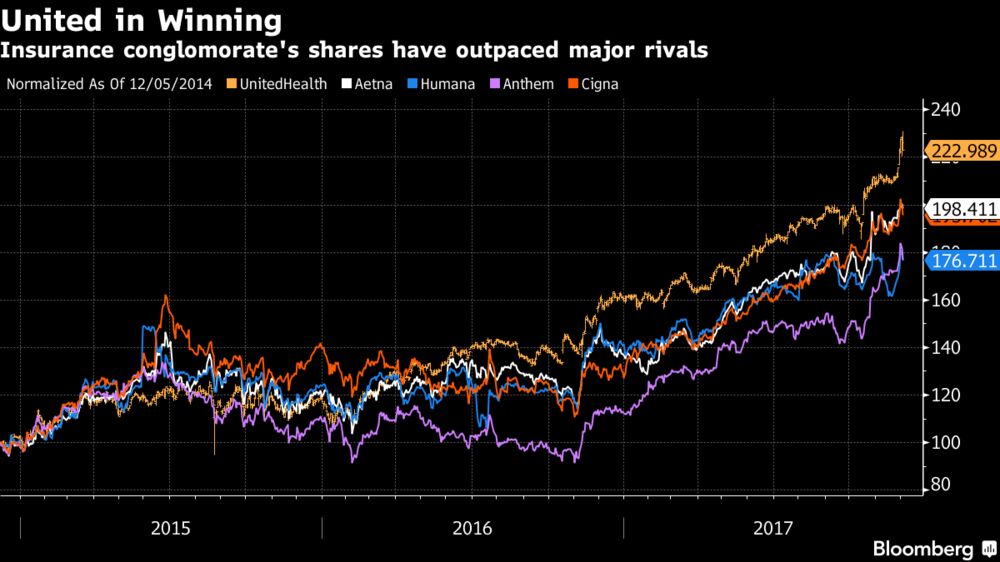As the specter of Amazon.com Inc. looms over the health-care industry, it’s easy to see the tech giant’s threat as a major factor behind the megadeal between CVS Health Corp. and Aetna Inc.
Yet the $67.5 billion deal will build a company to match up against a rival that already has businesses spread deep across the sector: UnitedHealth Group Inc.
The takeover, announced Sunday, will combine CVS’s drugstores, clinics and drug-distribution operation with Aetna’s health-insurance products. The companies’ executives say the transaction will make health care more accessible to consumers at CVS locations, promising higher quality, lower costs and more convenience.
UnitedHealth, the biggest U.S. health insurer, already offers many similar services. Its Optum business works with more than 30,000 doctors across more than 230 urgent-care clinics and 200 surgery centers, as well as regular doctors’ offices. It doesn’t own drugstores, but its pharmacy-benefit manager serves 65 million people -- compared with 90 million members at CVS’s PBM.
“The path here has been led by UNH/Optum,” Matthew Borsch, an analyst at BMO Capital Markets, said in a research note about the CVS-Aetna deal. “We see a bold strategy to match (and possibly leap frog) the health-care/PBM integration strategy.”
The integration is part of a wide-ranging effort by health-insurance companies and the federal government to shift care away from paying for each service, and toward paying doctors and hospitals for taking better care of patients and keeping them healthier. The move, known as value-based care, challenges traditional reimbursement models and business strategies across the industry.
The UnitedHealth model of putting different parts of care under the same roof can remove perverse incentives from the system. Some critics have said that pharmacy-benefits managers, known as PBMs, have cause to push up drug prices to improve their profits, for example.
Making them part of the same company that also delivers care and offers health insurance can ensures it doesn’t happen, said Craig Garthwaite, a professor of strategy at Northwestern University’s Kellogg School of Management.

‘Better outcomes’
“The things you need to do if you want to get people to be healthier, or at least reduce their spending and get better outcomes, require a lot of investments that come from both the insurance company and the locations of care,” Garthwaite said.
When different parts of the system combine, “everyone’s profit motives are aligned at providing care that leads to good outcomes,” he said.
To be sure, the prospect of Amazon’s potentially entering some part of the drug business, such as distribution or retail, probably played into the CVS-Aetna tie-up. The addition of a health insurer lessens CVS’s reliance on front-of-the-store sales at its retail pharmacies -- products like toothpaste and shampoo that already face some competition from Amazon.
Speculation has been rife over the past months that the Internet behemoth is planning an entry that could shake up the sector. So far Amazon has made no clear move to do so, and hasn’t commented publicly on its intentions.
© 2025 ALM Global, LLC, All Rights Reserved. Request academic re-use from www.copyright.com. All other uses, submit a request to [email protected]. For more information visit Asset & Logo Licensing.







